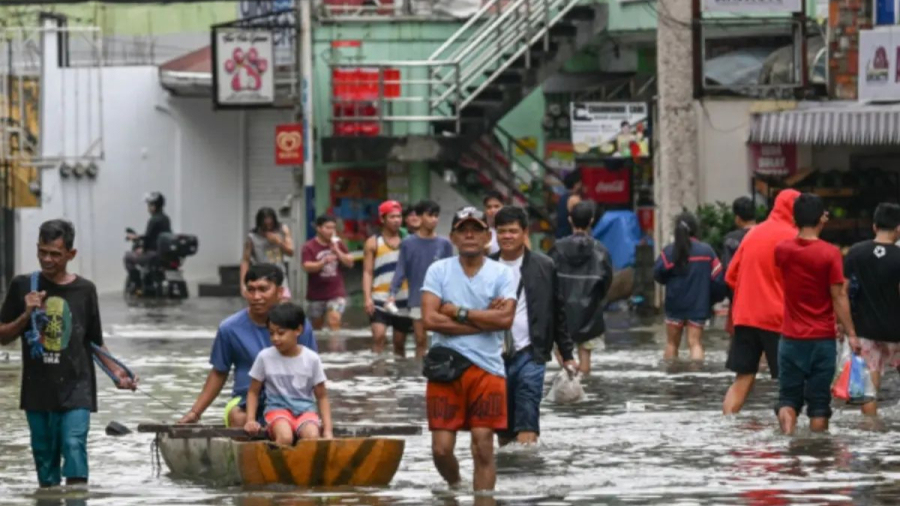Rescue efforts continued across the Philippines on Friday as authorities struggled to reach residents stranded on rooftops after Tropical Storm Trami left at least 40 people dead and several towns submerged.
The storm unleashed two months’ worth of rainfall over just two days, particularly affecting the Bicol region, and forced tens of thousands from their homes. Despite Trami moving out to sea, widespread flooding and landslides have made rescue operations difficult.
“Many are still trapped on the roofs of their homes and asking for help. We are hoping that the floods will subside today since the rain has stopped,” said Andre Dizon, Police Director for the Bicol region.
President Ferdinand Marcos expressed concern over landslides in unexpected areas, highlighting the extent of devastation in his address to the press. “There were landslides in areas that didn’t have landslides before … so I guess the soil is completely saturated,” he explained. He also mentioned that rescue teams were struggling to access Naga and Legazpi, where numerous casualties had been reported.
In Batangas province, south of Manila, six bodies were recovered in the village of Sampaloc, according to police. In the coastal village of Subic Ilaya, flash floods claimed another five lives, pushing the death toll to at least 40, based on tallies from police and disaster officials.
Warnings of storm surges, with waves up to two meters high, remained in place along Luzon’s west coast. Batangas saw record rainfall, exceeding 390 millimeters over October 24-25, prompting the closure of government offices and schools.
By Thursday, around 193,000 people had been evacuated, with over 30,000 fleeing in a single day from unprecedented flooding in Bicol. Floodwaters submerged homes in several towns, leaving many residents stranded and appealing for rescue on social media. Rescue boats were deployed in Naga and Nabua to reach those in need.
The Philippines, which is hit by around 20 major storms annually, is facing increasing storm intensity due to climate change. Studies suggest that storms in the Asia-Pacific region are becoming more powerful, reaching coastlines sooner, and maintaining strength longer on land.
